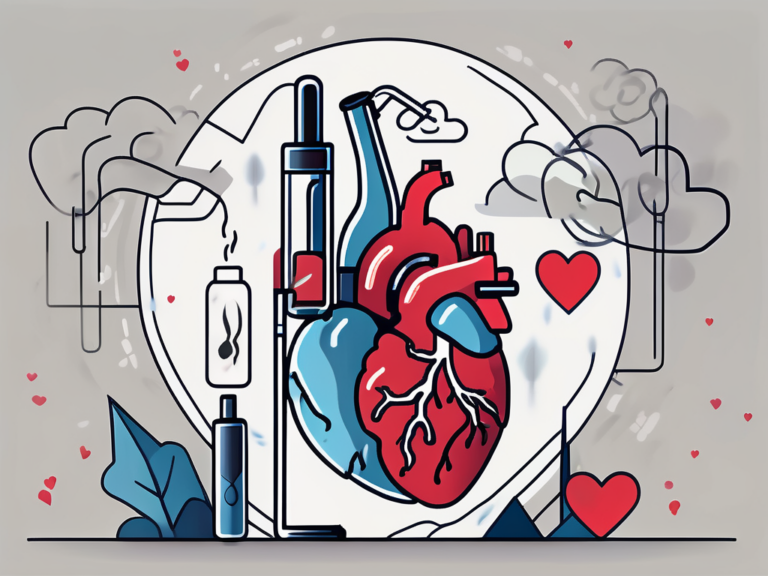how many calories are in vapes
In recent years, vaping has gained popularity as an alternative to traditional smoking. Many individuals have turned to vaping to avoid the harmful effects of tobacco smoke. However, as vaping becomes more prevalent, questions arise about its impact on our health, including how many calories are in vapes. In this article, we will explore the relationship between vaping and calories, shedding light on this intriguing topic.
Understanding Vaping and Calories
Before delving into the caloric content of vapes, it is crucial to understand the fundamentals of vaping itself. Vaping involves the use of electronic cigarettes, commonly known as e-cigarettes or vapes. These devices heat a liquid known as vape juice or e-liquid, which is then inhaled as a vapor. Vape juice is a mixture of various ingredients, each serving a specific purpose.
The Basics of Vaping
Vaping devices consist of a battery, a heating element, and a container for the vape juice. When the battery is activated, it heats the coil, which then vaporizes the e-liquid. The user inhales this vapor, experiencing the desired flavors and effects.
One key component of vape juice is propylene glycol, a synthetic liquid substance that is commonly used in food processing. Propylene glycol helps to evenly distribute flavor throughout the liquid and produces a satisfying vapor when heated. Another common ingredient is vegetable glycerin, which adds sweetness and thickness to the vape juice. These two primary ingredients, along with flavorings and nicotine (in some cases), make up the basic composition of most vape juices.
The Concept of Calories in Vapes
The concept of calories in vapes may seem puzzling at first. After all, vape juice does not contain any carbohydrates, proteins, or fats, which are the main sources of dietary calories. Instead, the caloric content of vape juice relies on the ingredients used in its formulation.
While vape juice itself may not contribute significant calories to your diet, it’s essential to consider the potential impact of vaping on your overall health and well-being. Nicotine, a common component in many vape juices, can have various effects on the body, including increased heart rate and blood pressure. Additionally, the long-term effects of inhaling vaporized chemicals are still being studied, raising concerns about respiratory health. As such, it’s important to approach vaping with caution and be mindful of its potential consequences.
The Ingredients of Vape Juice
To understand the caloric content of vape juice, it is essential to explore its ingredients. Vape juice typically consists of four primary components: propylene glycol (PG), vegetable glycerin (VG), nicotine, and flavorings.
Propylene Glycol and Vegetable Glycerin
Propylene glycol (PG) and vegetable glycerin (VG) are the base ingredients of vape juice. These substances are responsible for producing the vapor when heated. PG is a clear, odorless liquid that is used in various food and medical applications, while VG is a thick, sweet liquid derived from vegetable oils. The combination of PG and VG in vape juice helps create a balance between throat hit and vapor production. Neither PG nor VG contains significant calories, contributing little to the overall caloric content of vape juice.
When it comes to choosing the ratio of PG to VG in vape juice, vapers often consider factors such as throat hit, vapor production, and flavor intensity. Higher PG ratios tend to provide a stronger throat hit and more flavor, while higher VG ratios result in denser clouds of vapor and a smoother inhale. Vapers with sensitivities to PG may opt for high-VG blends for a gentler vaping experience.
Nicotine and Flavorings
Nicotine, a highly addictive substance, is often present in vape juice. However, nicotine itself does not contain any calories. It is the flavorings used in vape juice that might introduce calories. Some flavorings may contain small amounts of sugars or artificial sweeteners, which could contribute to the caloric content.
Flavorings play a crucial role in the vaping experience, offering vapers a wide range of options to suit their preferences. From fruity and dessert-inspired flavors to menthol and tobacco blends, the variety of vape juice flavors is vast and continually expanding. Vapers can experiment with different flavor profiles to find their perfect all-day vape, making the vaping experience both enjoyable and customizable.
Caloric Content in Vape Juice
While the caloric content in vape juice is minimal, it is still worth exploring the factors affecting its calculation and the potential implications it may have.
Vape juice, also known as e-liquid, is primarily composed of propylene glycol (PG), vegetable glycerin (VG), flavorings, and nicotine (optional). These ingredients are not significant sources of calories. PG and VG, the base components of vape juice, are low in caloric value and are not metabolized in the same way as carbohydrates, fats, and proteins. The calorie content of these substances is so negligible that they are often considered calorie-free.
Calculating the Caloric Value
Calculating the precise caloric value in vape juice can be challenging. Unlike food products, vape juice does not come with a nutrition label specifying its caloric content. Moreover, the possible caloric contribution from flavorings is typically negligible. Therefore, it can be safe to assume that most vape juices contain minimal to no calories.
It’s essential to note that any caloric impact from vaping is likely to be indirect. While the act of vaping itself does not introduce significant calories into the body, other factors associated with vaping may influence caloric intake. For instance, some vapers might experience changes in taste perception or appetite due to flavorings in vape juice. This could potentially affect food choices and calorie consumption if not managed mindfully.
Factors Affecting Caloric Content
Although vape juice itself may contain minimal calories, it is important to consider potential calorie intake indirectly associated with vaping. For example, some individuals may experience an increase in appetite while vaping. This could lead to greater food consumption, potentially resulting in weight gain if not managed properly. It is crucial to maintain a balanced diet and monitor overall calorie intake alongside vaping habits.
Comparing Vaping to Traditional Smoking
One may wonder how vaping compares to the caloric content found in traditional cigarettes.
When delving deeper into the comparison between vaping and traditional smoking, it’s essential to consider not only the caloric differences but also the broader impact on health and lifestyle. Let’s explore further to gain a comprehensive understanding of these two popular habits.
Caloric Differences Between Vaping and Smoking
Traditional cigarettes do not contain any significant calories. However, smoking can potentially impact an individual’s metabolism and appetite. Some people may experience a decrease in appetite when smoking, which could lead to weight loss. In contrast, others may turn to snacking or overeating as a way to satisfy cravings or deal with nicotine withdrawal symptoms.
Moreover, the act of smoking itself can become a ritual intertwined with daily activities, influencing behaviors and routines. On the other hand, vaping offers a different sensory experience, with various flavors and customizable options that may affect consumption patterns and preferences.
Health Implications of Vaping vs. Smoking
When considering the impact on overall health, vaping is often considered a less harmful alternative to traditional smoking. The combustion of tobacco releases harmful chemicals and toxins, which are not present in vape juice. However, it is essential to note that vaping still introduces nicotine into the body, which can have its own health implications.
Furthermore, the social dynamics surrounding vaping and smoking differ significantly. While smoking has faced increasing restrictions in public spaces due to secondhand smoke concerns, vaping is often more socially accepted in certain settings. Understanding these societal norms and perceptions is crucial in evaluating the broader implications of these habits on individuals and communities.
The Impact of Vaping on Diet and Nutrition
In addition to the potential indirect effects of vaping on calorie intake, let’s explore how vaping specifically affects appetite and weight.
Does Vaping Affect Appetite?
The impact of vaping on appetite can vary from person to person. Some individuals may experience a decrease in appetite when they vape, while others may not notice any significant changes. As with any lifestyle change, it is essential to be mindful of your own body’s response and adjust your diet accordingly.
It’s important to note that the act of vaping itself, particularly the hand-to-mouth motion, can sometimes serve as a substitute for snacking or overeating for some individuals. This can lead to a decrease in overall calorie consumption, potentially aiding in weight management for those who struggle with portion control.
Vaping and Weight Gain: Is There a Connection?
Although some individuals may be concerned about potential weight gain associated with vaping, there is no direct link between vaping and weight gain. It is essential to consider personal dietary habits and overall caloric intake when managing weight, regardless of vaping habits.
Furthermore, some studies suggest that certain flavor profiles in vape juices, such as sweet or dessert-like flavors, may trigger cravings for sugary foods in some individuals. This could indirectly impact dietary choices and potentially lead to weight gain if not managed consciously.
In conclusion, the caloric content of vape juice is minimal, primarily due to the absence of macronutrients like carbohydrates, proteins, and fats. While some flavorings may contain small amounts of calories, the overall contribution is insignificant. However, it is important to be aware of vaping’s potential impact on appetite and adjust dietary habits accordingly. As with any lifestyle change, it is essential to prioritize a balanced diet and monitor overall calorie intake to maintain a healthy lifestyle.






